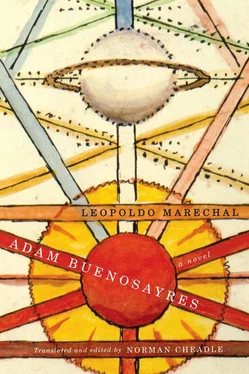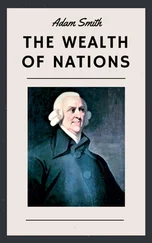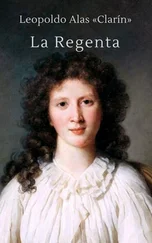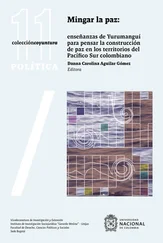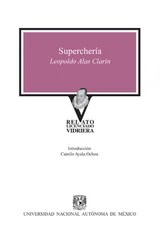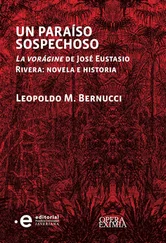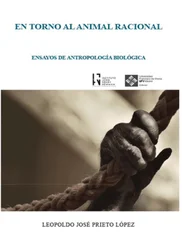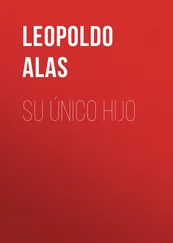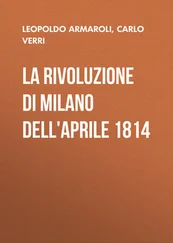47 Arcades ambo , “both Arcadians”: a phrase, now usually ironic, from Virgil’s Eclogue VIII v4 referring to two shepherd-poets.
48 Navascués ( AB 560n) finds in this episode several echoes of Trimalchio’s dinner in the Satyricon by Petronius (c. 27–66 CE).
49 As Navascués ( AB 561n) recalls, in chapter 34 of the Satyricon , “a slave brought in a silver skeleton, so contrived that the joints and movable vertebrae could be turned in any direction. He threw it down upon the table a time or two, and its mobile articulation caused it to assume grotesque attitudes, whereupon Trimalchio chimed in: ‘Poor man is nothing in the scheme of things / And Orcus grips us and to Hades flings / Our bones! This skeleton before us here / Is as important as we ever were! / Let’s live then while we may and life is dear’ ” ( Satyricon , Vol. 2, trans. F.W. Firebaugh, Project Gutenberg ebook).
50 In the brothel episode (Book Four, chapter 2), Schultz makes a snide remark about Jewish moralizing (see 662n7). Here his trite witticism, playing on the perfect rhyme in Spanish between color and olor , evokes the medieval anti-Semitic slur of foetor Judaicus . Marechal, after citing Schopenhauer in Book One (see 633n26), seems to attribute the German philosopher’s prejudices to the fictive astrologer. In his essay On Religion , Schopenhauer fulminates against Jewish morality, specifically linking it to foetor Judaicus several times in a few pages. Ironically, however, Schopenhauer’s contempt for Judaism is expressed in a subchapter titled “On Christianity” ( Parerga 362–77), in which he abhors the Christian religion for being infected by the perverse “Jewish” moral notion, which stems from the Old Testment book of Genesis, that animals and humans are fundamentally different — a notion equally abhorrent to the Christian (Thomist) Adam Buenosayres. However, it is unlikely that the real-life Xul Solar, whose art continually blurs the boundaries between the human, animal, and plant realms, would endorse the absolute separation of human and animal. In this sense, Xul is indeed close to Schopenhauer.
51 KJV John 17:6.
52 The Summa , by antonomasia, is that of Thomas Aquinas.
53 “Woe unto the world because of offences!” ( KJV Matthew 18:7).
54 “Melchizedek, king of Salem, brought out bread and wine. He was the priest of God Most High” ( KJV Genesis 14:18). Considered by Christian theologians to be an anticipation of the sacramental bread and wine of the Last Supper. The phrase “in the order of Melchizedek” occurs throughout the Old Testament; e.g., “You are a priest forever, in the order of Melchizedek” ( KJV Hebrews 5:6).
55 Possibly an allusion to Marcelo T. de Alvear, aristocratic leader of the centrist “anti-personalist” (anti-Yrigoyen) faction of the Radical Party, whose presidency of the nation (1922–28) interrupted the dual presidency (1916–22 and 1928–30) of the populist Hipólito Yrigoyen, also of the Radical Party. Alvear supposedly had a lisp.
56 Condensation of the second of the Ten Commandments: “Thou shalt not make unto thee any graven image, or any likeness of any thing that is in heaven above, or that is in the earth beneath, or that is in the water under the earth. Thou shalt not not bow down thyself to them, nor serve them; for I the Lord thy God am a jealous God” ( KJV Exodus 20:4–5).
57 An allusion to a similar idea, using the same Cervantine example, expressed in Miguel de Unamuno’s influential novel Niebla [Mist] (1914). In a crucial passage, the novel’s protagonist, Augusto Pérez, claims that he is more real than his author, citing against Unamuno the latter’s own oft-repeated argument that Don Quixote and Sancho Panza are more real than Cervantes, of whom we know relatively little (Unamuno 150–1).
58 Barcia (753–4n) observes that the following are stories from Argentine folk tradition. The formulaic question “How were the poor devils?” is the equivalent of “How did the trouble start?” But Schultz will resignify the phrase presently. Juan (Don Juan or Juancito) is the name conventionally assigned to the fox in these tales.
59 A pointed reference to Joyce’s famous boast when asked to explain Ulysses : “I’ve put in so many enigmas and puzzles that it will keep the professors busy for centuries arguing over what I meant, and that’s the only way of ensuring one’s immortality.”
60 Perramus: see 661n1.
61 Abel Sánchez (1917) is a novel by Miguel de Unamuno treating the Cain and Abel theme.
62 Given that the novel is set in the mid- to late-1920s, the dance figures a process of decadence ongoing since the 1870s; that is, since shortly after the establishment of the modern liberal hegemony in a unified Argentina under President Mitre in 1862.
63 The Botanical Gardens of Palermo, in Buenos Aires, date back to 1779. Gradually expanding, they now occupy ten hectares.
64 Cuyo is a region in central western Argentina comprising the provinces of Mendoza, San Juan, and San Luis. Tucumán is a province in the north.
65 In ancient Greek art, the god of matrimony Hymenaeus (or Hymenaios) appears as a wingèd child bearing a torch in his hand.
66 White and blue are the colours of the Argentine flag.
67 Malambo de la Cabra Tetona: “The Malambo of the Big-Boobed She-Goat.” The malambo is a folkloric dance in Argentina.
68 I have not translated this paragraph literally, since it is formed entirely of apparently meaningless wordplay.
69 Errare humanum est : “To err is human” (attributed to Seneca). The next phrase in Latin is a variant of a psalm from the Vulgate Bible: nunc ergo reges intellegite erudimini iudices terrae ; [“be wise now therefore, O ye kings: be instructed, ye judges of the earth”] ( KJV Psalms 2:10).
70 The Gallic metaphysician is no doubt René Guénon (cf. 626n20, 628n6, and 637n7). Schultz’s discourse is indebted to Guénon’s exposition, in Introduction générale à l’étude des doctrines hindous (1921), of the Hindu caste system, whose mythic origin is given in the Rig Veda .
71 In his essay “Autopsia de Creso” [Autopsy of Croesus], Marechal praises Guénon as a “philosopher of history” ( Cuaderno 53).
72 Xul Solar painted several watercolours in the 1920s with the motif of the dragon, including: Dos Dragos (1920), Dama, pájaro, drago (1922), Hombre y dragón (1922), Drago y dama fluctúo (1923), Drago San Jorge (1923), and Drago (1927).
73 La Prensa is an old, staunchly liberal Argentine daily in existence since 1869. During the government of Juan Domingo Perón, it was closed down and in 1951 was expropriated for its militant anti-Peronist stance. Returned to its owners in 1956, it resumed operations and continues to this day.
74 “¡Hijo audaz de la llanura / y guardián de nuestro suelo!” First verses of the ten-line poem “Al Pampero” by Rafael Obligado (1851–1920).
75 In Spanish, the two basic meanings of bomba are “pump” and “bomb,” but the expression hacer bombas means “to blow bubbles”; estar echando bombas , “to be foaming at the mouth.”
76 Unione e Benevolanza . An association of Italian immigrants still active today and founded in Buenos Aires in 1858, according to its website.
77 Barcia (797n) notes that name orejudo (long-eared) was popularly applied to the Conservative Party, after their leader Marelino Ugarte’s nickname “el Petizo Orejudo” (the Long-Eared Pipsqueak).
Читать дальше
